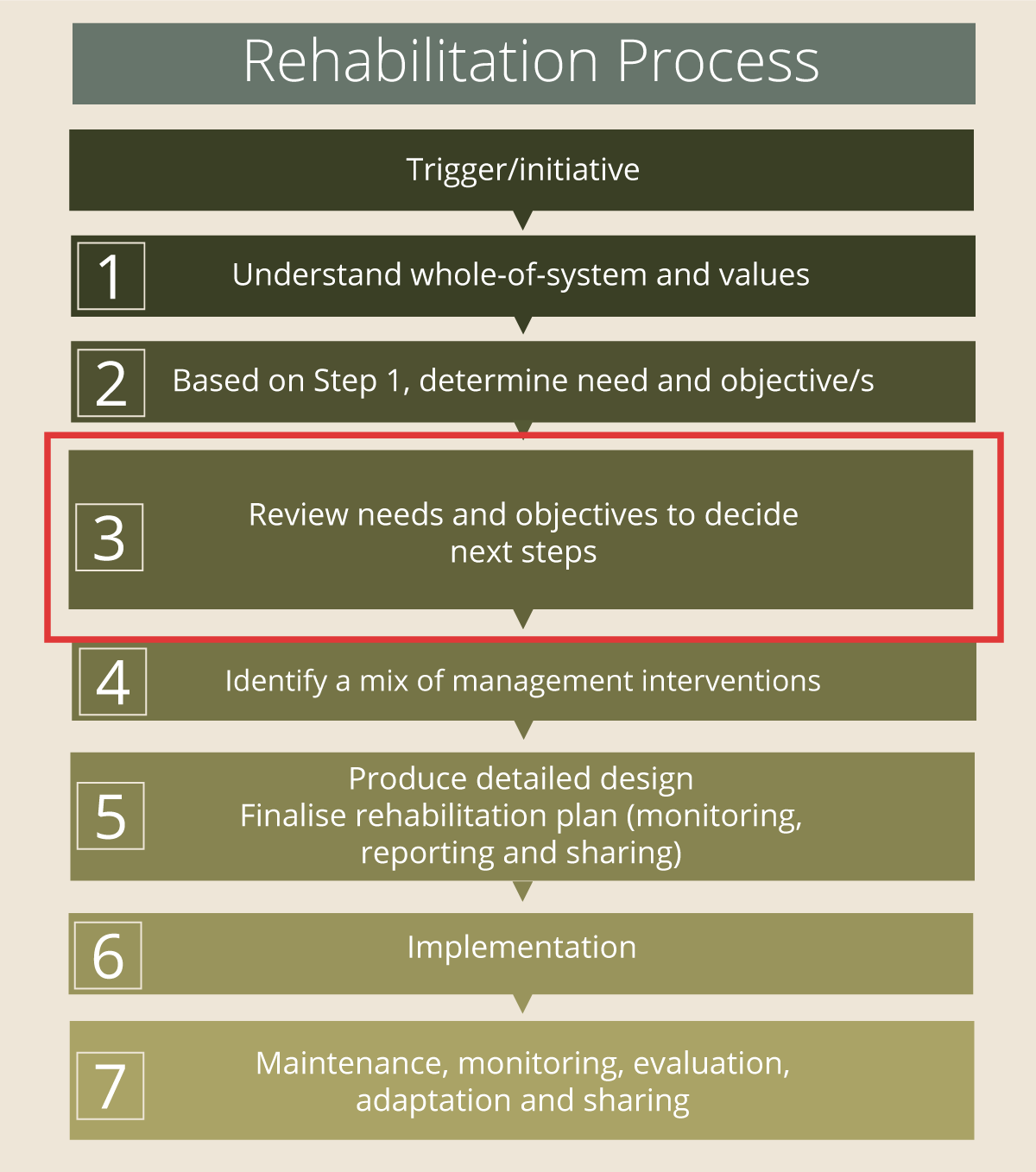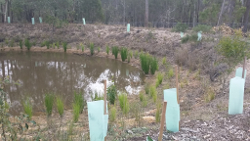|
|
Step 3: Review needs and objectivesThe original intent of a rehabilitation plan may change over time, especially after undertaking Step 2. Step 3 in the Rehabilitation Process applies the information that has been gathered about the system and the site, and reviews the need for rehabilitation, and/or the appropriateness of the original objectives. Why are needs and objectives reviewed?There are several reasons why objectives and management interventions may be reconsidered including:
Use the 'things to think about' list below to establish the feasability of the proposed rehabilitation work and modify objectives and outcomes according to the following scenarios:
What to do if objectives or needs have changedReassessment of the rehabilitation project needs and objectives will ensure the rehabilitation activities taking place are appropriate for the system, and accepted by stakeholders. Reassessment of the objectives does not prevent rehabilitation activities taking place. The objectives could be modified slightly to align with the values and beneficiaries identified, or the site opportunities or constraints. Referring back to Step 2 will help to achieve sufficient understanding to find objectives that are viable.
Things to think about:
More informationWhole-of-System, Values-Based Framework See a table listing Information sources for aquatic ecosystem rehabilitation planning See the next step, Step 4: Identify a mix of management interventions Last updated: 13 June 2022 This page should be cited as: Department of Environment, Science and Innovation, Queensland (2022) Step 3: Review needs and objectives, WetlandInfo website, accessed 8 May 2025. Available at: https://wetlandinfo.des.qld.gov.au/wetlands/management/rehabilitation/rehab-process/step-3/ |

 — Department of the Environment, Tourism, Science and Innovation
— Department of the Environment, Tourism, Science and Innovation



